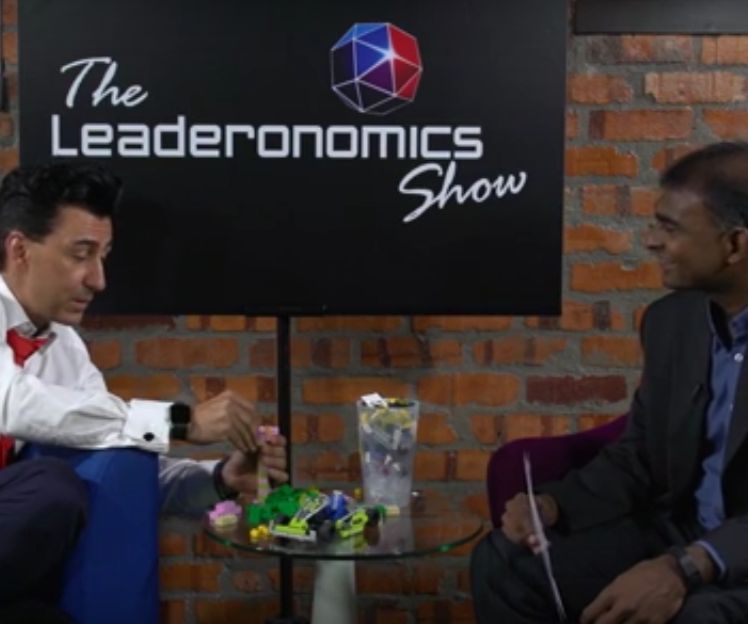It’s Not Enough Just To Keep The Engines Running…

 Photo credit (above): Kris Carillo | Flickr
Photo credit (above): Kris Carillo | Flickr
Building a strategic HR that drives the business
Too much has been said, taught, preached and written about this. Yet, the early adopters in the nation are limited, and many small and large organisations alike are still uncertain on how to transform human resources (HR) into a strategic arm of the organisation.
An article, “Why I Hate HR”, written a decade ago by Keith Hammonds in Fast Company, describes how the HR professionals are not developing themselves fast enough to support the need to build a talent-centric organisation to cater for the knowledge economy.
He states, “The human resources trade long ago proved itself, at best, a necessary evil – and at worst, a dark bureaucratic force that blindly enforces nonsensical rules, resists creativity, and impedes constructive change.
“HR is the corporate function with the greatest potential – the key driver, in theory, of business performance – and also the one that most consistently underdelivers.”
It may offend some in the profession as he makes this seemingly condescending statement.
However, while we need some of the tactical HR aspects to be present, it shouldn’t be the only reason of existence.
With the corporate world becoming so competitive, just being operational for HR (and any other department) will not suffice anymore for an organisation who wishes to be on top of their game.
Many leaders are aware of the talent war and that to truly succeed and survive in this competitive world, they need to make HR a strategic partner.
It’s no longer about the “whats” and “whys”. Let’s look at four quick things you can put in place to start off this transformation.
Your baby steps to transformation
1 Appoint a strategic HR leader
It is tempting to do what is seemingly the “right” thing – promote or redesignate your (operational) HR head to transform and grow his/her current team into a strategic division.
After all, the current HR head would be so familiar with the business, it wouldn’t take him/her long to move HR in this new direction. Perfect plan, right? Not quite!
While that seems to be the easiest and wisest thing to do, it may not always generate the positive results we intended it to.
That is mainly because for HR to be a strategic partner, we need to have someone with a strategic mindset, good understanding of the business landscape, forward-looking vision, a heart for the people, as well as one who dares to risk a little.
We need someone who would dare to make exceptions or even breakdown some HR processes, procedures and policies, simply because it is not working or is a roadblock to the rapid growth of the organisation.
A typical person who goes by the book may not be open to new ideas such as flexible working hours, quick or even double promotions for a talent, giving exceptions where needed – simply because it’s against policies.
It is important that this strategic HR leader is able to be visionary, anticipative of future needs, proactive and not just reactive to current issues.
It may be surprising to some, but most great strategic HR leaders I know today are not from HR backgrounds.
To move forward as an organisation, we need a HR leader to drive the business, not just help keep the engine running.
Can your current HR head drive, now that you know the destination?
2 Surround the strategic leader with top and right hires
Studies show that most top graduates do not choose HR as their first career option. My guess is that most still have the conventional view of HR being operational and boring, with no career progression.
I believe things will change as more organisations realise the need for talent to also join the team in building other talent within the organisation through HR’s effort.
If there is a need, and there usually is, hire a new team to drive strategic HR initiatives.
One example of such roles would be an organisation development head who oversees talent programmes, succession planning, organisation learning plans and development of your top leaders.
It is key that the strategic HR leader understands where the company is heading. With that in mind, he/she should think through the type of skills, knowledge and personality required in those helping to drive the company forward.
With that, he/she can build a success profile for the organisation, and refer to this profile when hiring.
It is always tempting to hire the “best” out there. The ones with good grades, a great track record and excellent leadership experience.
However, there’s so much more than just grades and positions held.
In achieving some strategic objectives, we may need people movers who can influence the masses.
In others, we need solo contributers who can quickly grasp strategic, business and operational issues that most people do not see.
Hence, if we have profiles of the people we need in the organisation, it makes this hiring process easier.
3 Paradigm shifts for the organisation
In his Forbes article “How Strategic HR Wins its Suit with the C-Suite”, Steve Denning said, “It begins by committing the entire organisation to delighting the customer as the principal goal of the organisation and putting in place the management principles and practices that enable staff to fulfill that goals.
“This means shifting the role of managers from controllers to enablers, coordinating work through dynamic linking rather than bureaucratic processes, a shift from economic value to values and a shift from top-down command to adult-to-adult conversations.”
For this transformation to happen, a slightly longer term effort is required.
Firstly, C-suite needs to start seeing HR as an investment centre rather than a cost centre.
That means, we need to be more willing to hire the right top people, invest in talent assessments and programmes, build a competency model and rework some of the HR policies.
All this is done with the view and expectations that existing and new talents will be better developed to contribute more back to the organisation, which will eventually increase the efficiency, profitability and image of the company.
Take trainings for example. If we are honest with ourselves, how many times do we select a training programme based on the cost?
Is it HRDF-claimable (Human Resource Development Fund)? Is it within the given range?
While it is great to have caution to also protect the organisation financially, the new strategic HR leader needs to be able to see beyond this and identify premium development sessions or programmes that will truly benefit the key people in the organisation.
Another good example is promotion. At times, managers start thinking about promotion towards the year end appraisal (or when HR asks them to do so).
In the move towards being strategic, HR needs to instill in all leaders within the organisation to think and train a successor for the years to come.
This succession planning efforts can help ensure that the organisation has capable drivers in the future and not have to scramble for any should its key people suddenly decide to leave.
4 Make strategic HR understandable and implementable
According to Rosanna Nadeau, “HR’s strategic role goes well beyond a team role in deciding the strategy. Execution is where most organisations struggle or fail, and HR can significantly impact execution.”
One of the dangers as we move towards having a strategic HR team is that after the leader exits a strategic meeting with the C-suite, he/she starts speaking the “C-language” that his/her team may not fully understand.
Terms like “stakeholder value” and “return on investments” are not implementable and measurable items for the team.
It is the HR leader’s duty then to first make it understandable to the HR team, then ensuring that all leaders in the organisation does the same for their teams.
Being able to translate these high-level terms into context of the department makes it easier for the team to also plan their year’s activities to achieve these goals.
To top that up, having a performance system that is aligned to measuring steps taken to achieve strategic goals will help keep every employee in check.
Now, not only is the leader driving the organisation, he/she has just gained himself/herself a group of co-drivers heading in the same direction.
Concluding thoughts
It’s exciting. It’s tough. It’s for the long haul. But it’s rewarding.
So, start linking up with key alliances in the industry to help you through this time of change and advancement of HR and your organisation.
Elisa is the director of learning and acceleration at Leaderonomics. To know more about learning and acceleration programmes at Leaderonomics, drop us a line at people@leaderonomics.com.
First published in English daily The Star, Malaysia, 1 November 2014
Leadership




